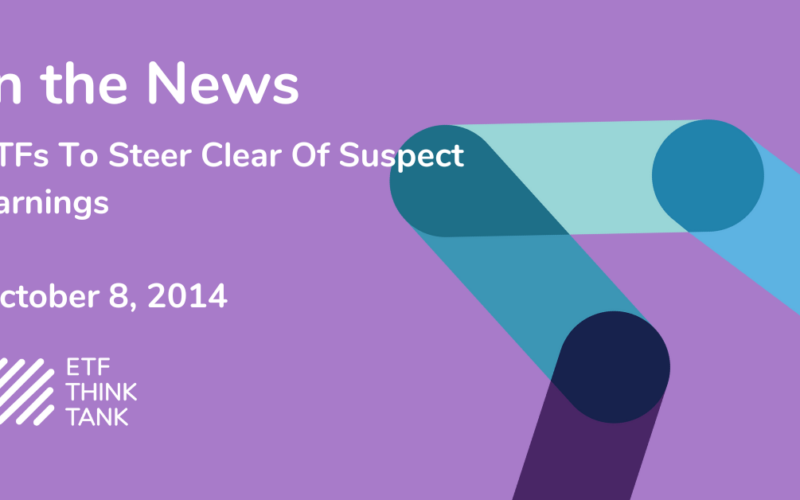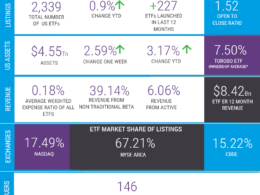Modern Portfolio Theory and Correlations
The goal of modern portfolio theory (MPT) is to have a portfolio of assets that each have positive expected long-term returns, and are negatively correlated to each other, so as to help smooth out the volatility of the overall portfolio and potentially increase the overall returns through rebalancing. Correlations measure the likelihood that the two securities or asset classes move in the same direction. Unfortunately, correlations can fluctuate in periods of heightened volatility. While investors expect returns to fluctuate, many investors were not prepared for the across the board severe declines in the majority of asset classes held in 2008. Much of this can be attributed to the diminished diversification benefits between different types of equity investments in the face of heightened volatility.
U.S. Treasuries have been the asset class of choice when looking for pure portfolio diversification to equities. In other words, when equities were going down, treasuries would be expected to go up. This relationship existed even in 2008 and 2009 when volatility spiked. Surprisingly, as the chart below demonstrates, treasuries have not always been uncorrelated to equities.

Based on the decisions of the Federal Reserve Board affecting interest rates and money supply, and where bond yields are likely heading, it’s not out of the question that future rises in interest rates could break down the correlation benefits on which MPT investors have depended. This could be especially true if future increases to interest rates do not coincide with strong growth markets. This is not to say bonds are a poor diversifier, but rather that investors should not be surprised that the diversification benefits of bonds, which historically have fluctuated, are also likely to fluctuate in the future.
Other Forms of Portfolio Insurance
There are other ways to provide downside protection, or “portfolio insurance”, in an investment portfolio. Some investors are attempting to hedge the changing correlation benefits of their portfolios, namely volatility. Unfortunately, the only way to capture this volatility is to use exchange-traded products (ETPs) that capture the differences in VIX futures prices. VIX is the ticker symbol for the Chicago Board Options Exchange Market Volatility Index, a popular measure of the implied volatility of S&P 500 index options. Often referred to as the fear index, it represents one measure of the market’s expectation of stock market volatility over the next 30 day period. But history has shown VIX futures prices to be in contango more often than not. Contango is where the longer-term futures prices are above the shorter-term futures prices, creating a substantial cost of maintaining that exposure to the VIX.
Additionally, because volatility is nonlinear (in other words, the price of the VIX is not in line with the volatility it measures), it has had a difficult time keeping value through choppy markets. All of this creates erosion for a long-term investor, and has mitigated many of the benefits that VIX ETPs were intended to offer (more on this later in this commentary). Which leads us to question whether there is a better way to get a similar portfolio hedge without experiencing erosion due to contango in the VIX futures markets?
Equities That Lose Less – Downside Protection with Non-Traditional Indexing
Another way investors have attempted to add value is through non-traditional indexing. One of the most popular forms of this idea has been low-volatility investing. There are many different methodologies on how to construct a low-volatility portfolio, but the basic idea is to have a basket of stocks that will be less volatile, and in theory, offer downside protection against traditional market-cap weighted indexes. Clearly, this will help, but it is still a basket of stocks, which means that it will most likely be highly correlated with the rest of the portfolio.
Next we explore what this would look like if you were to try to incorporate low beta (or low volatility) investing within a long/short, market neutral format. Essentially, the strategy is to buy the low beta stocks and short the high beta stocks in a single product.
The Evolution of Low Volatility/Beta Investing
The Dow Jones U.S. Thematic Market Neutral Anti-Beta Index (DJ Anti-Beta Index) measures the performance of an investment strategy utilizing short positions on high beta companies and long positions on low beta companies. It is designed to be market and sector neutral (which will not affect sector tilts in the rest of a portfolio). On September 13, 2011, QuantShares U.S. Market Neutral Anti-Beta ETF (BTAL) was launched. BTAL attempts to follow the DJ Anti-Beta Index and when coupled with stock market investments can offer portfolio insurance like returns and the low volatility concept that investors have flocked towards. The index was first calculated on August 22, 2011, and back-tested to December 31, 2000. As you can see from the chart below, this Index has a very compelling non-correlated return stream compared to traditional equities returning over 35% in both 2002 and 2008, and over 13% in a choppy year like 2011.

In the next chart we look at the rolling 3 year correlations of the DJ Anti-Beta Index since its inception and Treasuries to the S&P 500 Index, you will notice that the DJ Anti-Beta Index has even better diversification benefits than traditional treasuries.

Building a Portfolio
But then the question becomes whether better diversification, expressed as non-correlation, results in a better portfolio in terms of returns. The next chart shows the resulting growth of $100 since January 1, 2006 when you build a portfolio consisting of 75% S&P 500 Index and 25% of Treasuries Index, or 25% of the DJ Anti-Beta Index, or 25% of the S&P 500 VIX Mid-term Futures Index, respectively.

Let’s put this all together and see what we have learned:
- The drag of contango costs imbedded in the VIX Mid-term Futures Index has hurt the overall performance such that the diversification benefits created in 2008 have been mostly eroded.
- The DJ Anti-Beta Index seems to have more consistent negative correlation to equities than treasuries, with what appears to be just a fraction of the drag of the contango costs of VIX Futures.
- Treasuries appear to have added the most overall return compared to the other two strategies, but had the highest maximum drawdown in 2008.
While it appears that of the three strategies presented, treasuries have added the most value, this may not necessarily be the case going forward. In this most recent analysis period from January 1, 2006 to May 31, 2014, which was constrained by the start of the S&P VIX Mid-term Futures Index, treasuries have continued to show consistent negative correlation to equities. But as mentioned earlier in this commentary, this has not always been the case and since past performance is not an indicator of future returns, investors should not expect treasuries to experience the same type of price appreciation in the future. Consequently, it may be time to diversify your diversifiers.
In Conclusion
Implementing strategies that utilize exposure to the DJ Anti-Beta Index is just one example of how Toroso compliments other traditional forms of portfolio diversifiers in order to build portfolios with varying correlations and hedge out the type of tail risk that has traditionally been mitigated through exposure to VIX ETPs, without incurring the structural cost of maintaining VIX ETP exposure, which is referred to as “contango.” We are not implying that there is such a thing as free tail risk protection, as negative correlation always has a cost, but with the DJ Anti-Beta Index the cost is not built into the structure. Therefore, there may be ways to systematically cover this “cost” and still provide the desired outcome during dramatic bear market events.
Disclosure
All investments involve risk, including possible loss of principal.
This material is provided for informational purposes only and should not be considered an individualized recommendation or personalized investment advice. The investment strategies mentioned may not be suitable for everyone. Each investor needs to review an investment strategy for his or her own particular situation before making any investment decision.
All expressions of opinion are subject to change without notice in reaction to shifting market conditions. Data contained herein from third party providers is obtained from what are considered reliable sources. However, its accuracy, completeness or reliability cannot be guaranteed.
Examples provided are for illustrative purposes only and not intended to be reflective of results you can expect to achieve.
The value of investments and the income from them can go down as well as up and investors may not get back the amounts originally invested, and can be affected by changes in interest rates, in exchange rates, general market conditions, political, social and economic developments and other variable factors. Investment involves risks including but not limited to, possible delays in payments and loss of income or capital. Neither Toroso nor any of its affiliates guarantees any rate of return or the return of capital invested. This commentary material is available for informational purposes only and nothing herein constitutes an offer to sell or a solicitation of an offer to buy any security and nothing herein should be construed as such. All investment strategies and investments involve risk of loss, including the possible loss of all amounts invested, and nothing herein should be construed as a guarantee of any specific outcome or profit. While we have gathered the information presented herein from sources that we believe to be reliable, we cannot guarantee the accuracy or completeness of the information presented and the information presented should not be relied upon as such. Any opinions expressed herein are our opinions and are current only as of the date of distribution, and are subject to change without notice. We disclaim any obligation to provide revised opinions in the event of changed circumstances.
The information in this material is confidential and proprietary and may not be used other than by the intended user. Neither Toroso or its affiliates or any of their officers or employees of Toroso accepts any liability whatsoever for any loss arising from any use of this material or its contents. This material may not be reproduced, distributed or published without prior written permission from Toroso. Distribution of this material may be restricted in certain jurisdictions. Any persons coming into possession of this material should seek advice for details of and observe such restrictions (if any).












